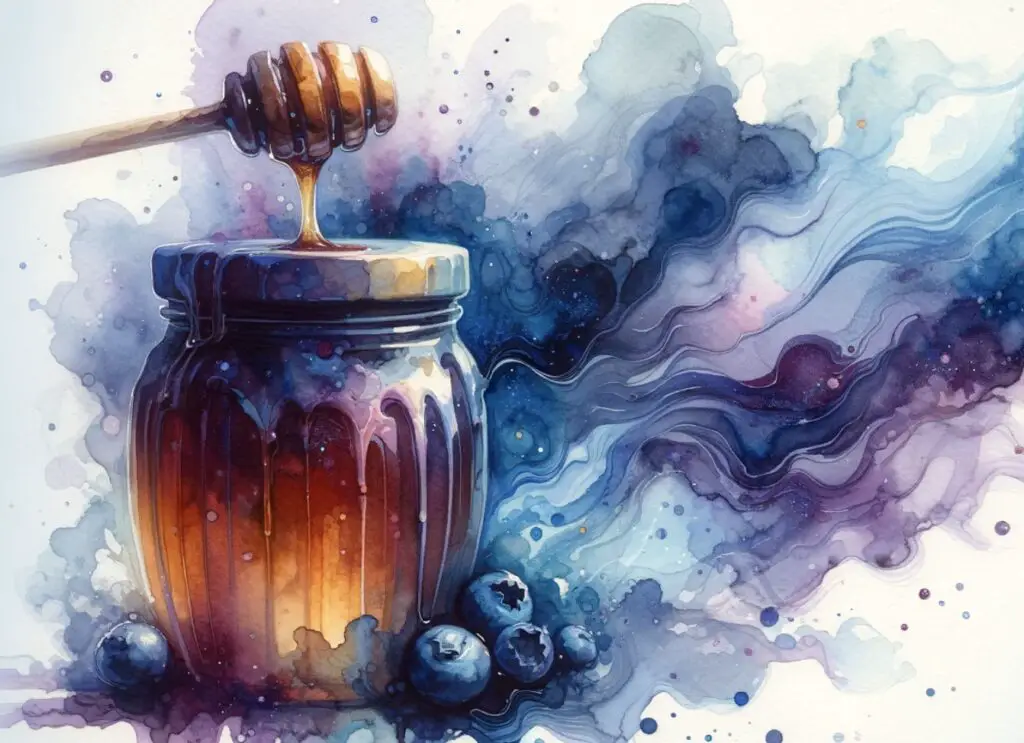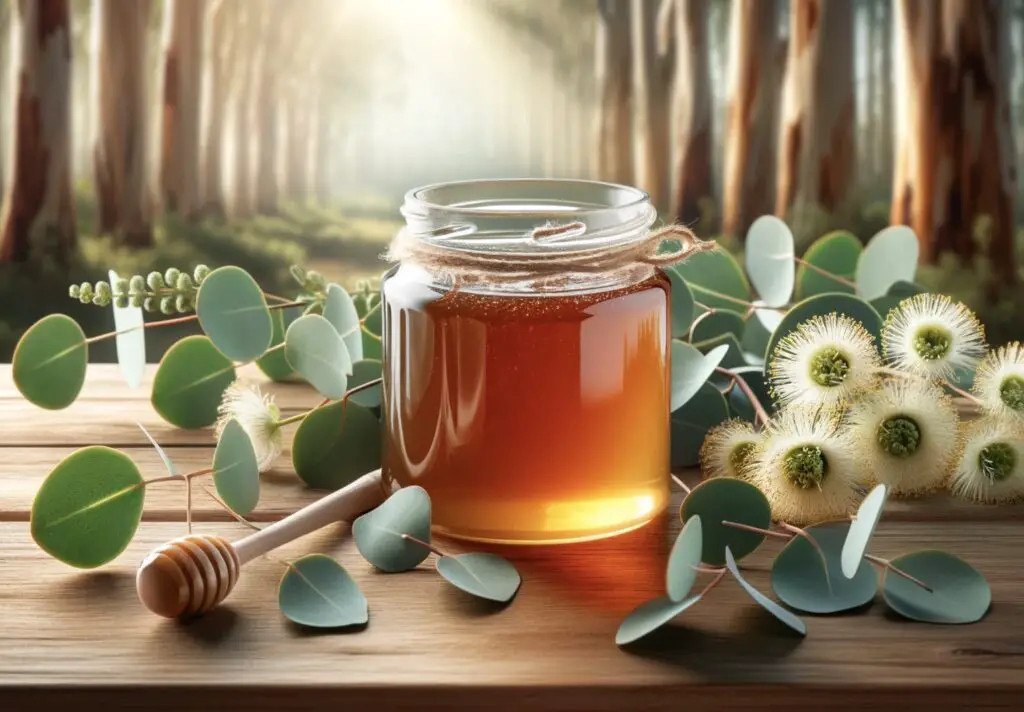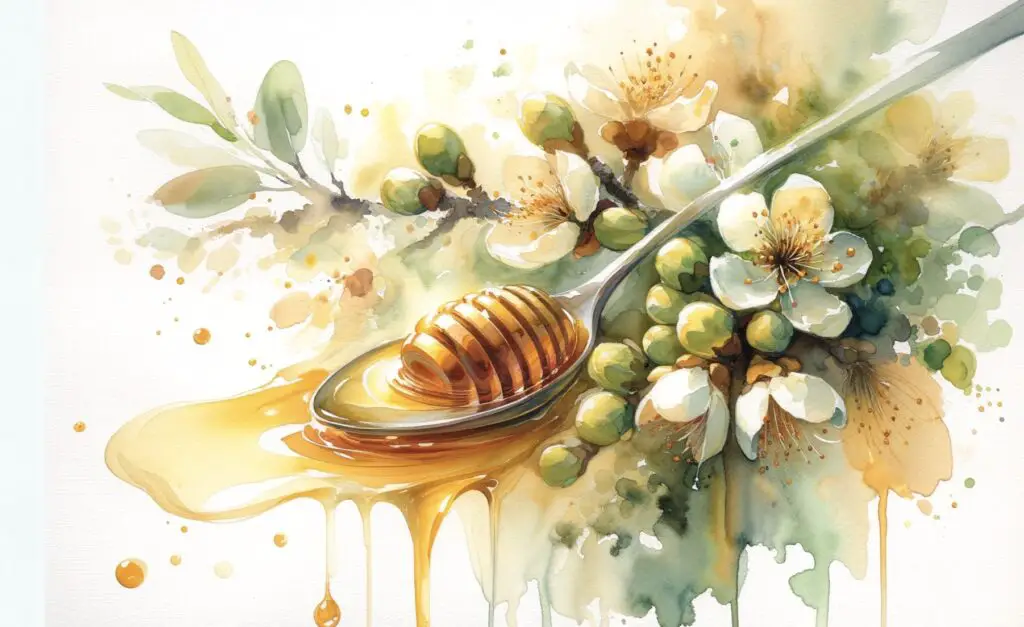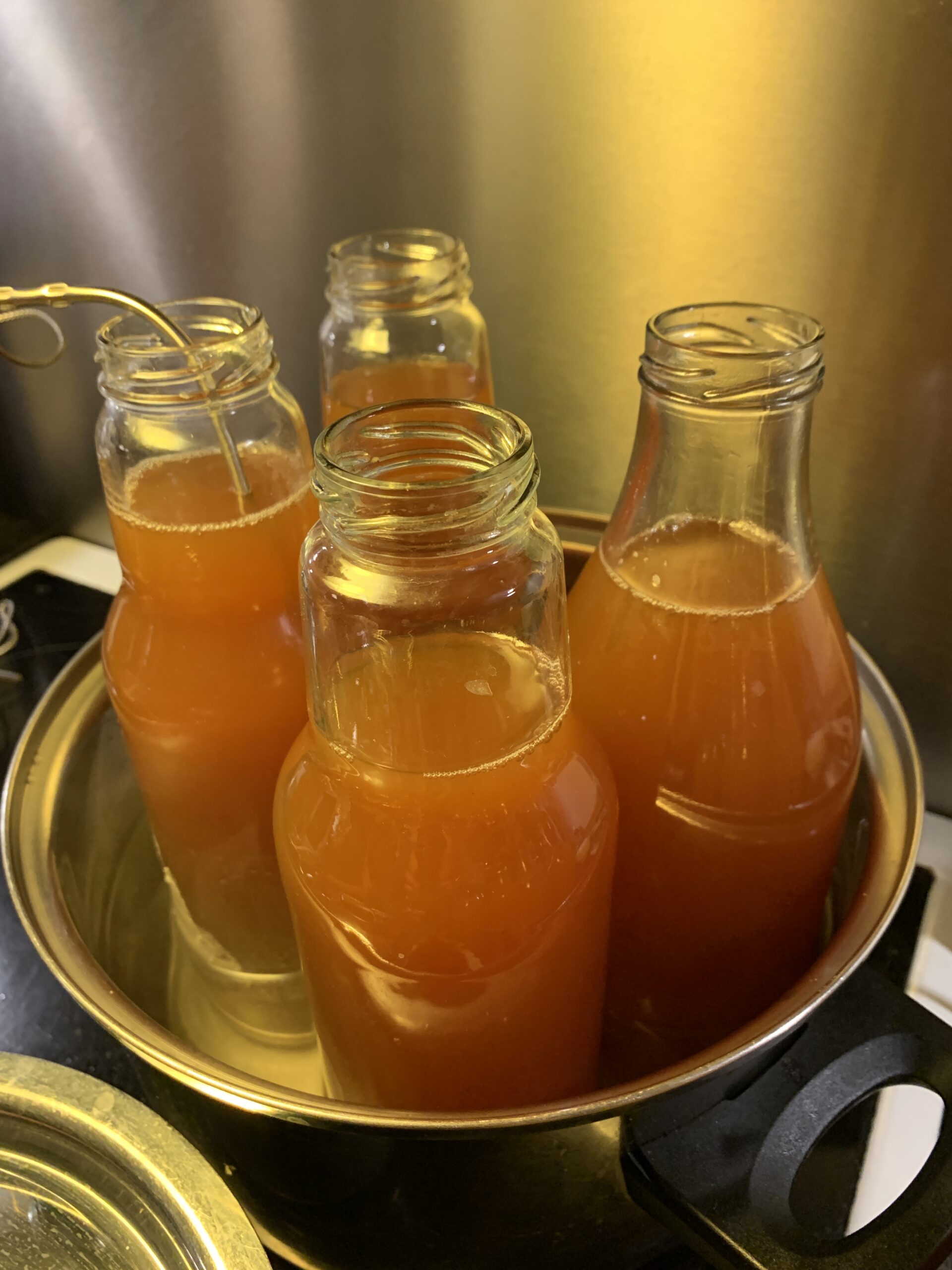Mead, often referred to as “honey wine,” is a delicious and ancient beverage that has been enjoyed for centuries. At the heart of creating this delectable drink is the key ingredient: honey. With its unique flavors and characteristics, honey plays a vital role in the art of mead making. But not all honeys are created equal.
Choosing the right honey can make all the difference in the taste and complexity of your mead. In this article, we will explore the top 10 honeys used in mead making, highlighting their attributes, flavor profiles, and how they contribute to the overall quality of the final product.
Whether you’re a seasoned mead maker or just starting out on your mead-making journey, this guide will help you make the most delicious mead possible.
What role does honey play in making mead?
Mead is an ancient alcoholic beverage made by fermenting honey with water. It is often referred to as “honey wine” due to its similarity in production process and alcohol content to traditional grape wines. Honey is the primary ingredient in mead making and plays a crucial role in its flavor and character.

The natural sugars found in honey are converted into alcohol during the fermentation process, resulting in a sweet and rich beverage. The unique floral, fruity, and sometimes earthy flavors of different types of honey add complexity to the mead, making it a delightful and diverse drink for mead enthusiasts to enjoy.
How to choose the best honey for mead making.
When it comes to choosing the best honey for making mead, there are a few factors to consider. First and foremost, it’s important to select a high-quality honey that is free from any additives or preservatives.
Look for honey that is pure and unprocessed. Additionally, consider the flavor profile you want to achieve in your mead. Different varieties of honey will contribute unique flavors to the final product.
For example, wildflower honey will bring floral and earthy notes, while clover honey will impart a mild and sweet taste. It’s also worth experimenting with different types of honey to create complex and interesting flavor combinations in your mead. Remember, the quality and characteristics of the honey will greatly impact the overall taste of your mead.
1. Wildflower Honey
Wildflower honey is a popular choice among mead enthusiasts for its diverse and complex flavor profile.

Derived from the nectar of various wildflowers, this honey exhibits a rich and robust taste that can vary depending on the region and time of year it was harvested. Its flavor can range from floral and fruity notes to hints of caramel and spice, making it an ideal honey for creating flavorful meads.
Wildflower honey also offers a distinct depth and complexity, adding depth and character to the final product. Whether you’re looking for a subtle or bold mead, wildflower honey is sure to enhance your mead-making experience.
Wildflower Honey attributes and flavor profile
Wildflower honey is a delightful and versatile type of honey that is widely used in mead making. It is characterized by its floral and slightly sweet flavor profile, offering a diverse range of floral undertones that can vary depending on the specific wildflowers the bees have foraged on.
The color of wildflower honey can also vary, ranging from light amber to dark amber. In terms of attributes, wildflower honey is known for its rich aroma, smooth texture, and complex flavor profile. Its floral notes make it an excellent choice for adding depth and complexity to meads, creating a well-balanced and delicious final product.
How Wildflower Honey contributes to mead-making
Wildflower honey is a versatile choice for mead-making due to its unique attributes and flavor profile. Its complexity adds depth to the final product, making it a favorite among mead enthusiasts. With its floral and earthy notes, wildflower honey brings a delightful aroma and taste to mead.
The variety of nectar sources that bees collect from wildflowers creates a diverse blend of flavors, resulting in a well-rounded mead.
Its natural sweetness provides the necessary fermentable sugars, ensuring a successful fermentation process. Wildflower honey also possesses antimicrobial properties that help preserve the mead during aging. Overall, incorporating wildflower honey into mead-making adds a touch of nature’s diversity and enhances the overall experience for mead connoisseurs.
2. Alfalfa Honey
Alfalfa Honey is a popular choice for mead making due to its unique attributes and flavor profile. This light amber colored honey has a mild floral taste with subtle hints of grass and a slightly tangy aftertaste. Its delicate yet distinct flavor adds depth and complexity to mead recipes.

Alfalfa Honey is known for its ability to enhance the aromatic qualities of mead, making it a favorite among mead enthusiasts. It blends harmoniously with other ingredients, allowing for a balanced and well-rounded final product.
When used in mead making, Alfalfa Honey contributes to a smooth and refreshing mouthfeel, while also imparting a subtle sweetness. Its versatility makes it a great choice for both traditional and modern mead recipes.
Overall, Alfalfa Honey adds a delightful touch to mead, making it a must-try for all aspiring mead makers.
Alfalfa Honey attributes and flavor profile
Alfalfa honey is known for its light golden color and a mild, delicate flavor. It is derived from the nectar of the alfalfa plant, which is widely grown in North America. The honey has a smooth texture and a subtle floral aroma. One of the notable attributes of alfalfa honey is its clarity, making it a visually appealing choice for mead making.
In terms of flavor, alfalfa honey offers a balance between sweetness and gentle herbal undertones. Its mild taste allows it to blend well with other ingredients, adding a subtle complexity to the mead. Additionally, the light flavor profile of alfalfa honey makes it a versatile option for various mead styles, from traditional to fruit-infused varieties.
How Alfalfa Honey contributes to mead-making
Alfalfa honey, with its light amber color and delicate floral taste, brings a unique contribution to the world of mead-making. Its nectar is gathered from the purple blooms of the alfalfa plant, resulting in a honey that is rich in antioxidants and minerals. When used in mead-making, Alfalfa honey adds a subtle sweetness and a mild, grassy undertone to the final product. It pairs well with a variety of ingredients, allowing for endless experimentation with flavors and aromas. Whether used on its own or in combination with other honeys, Alfalfa honey brings a refreshing and nuanced element to the art of mead-making.
3. Blueberry Honey
Blueberry Honey is a distinct type of honey known for its delicate flavor and stunning color. It is produced when honeybees gather nectar from the blossoms of blueberry plants, resulting in a unique floral taste with hints of the fruit itself. Blueberry Honey has a light to medium amber color and a smooth, syrupy texture.

Its flavor profile combines the sweetness of honey with subtle tangy notes reminiscent of fresh blueberries. When used in mead making, Blueberry Honey adds a delightful fruity essence to the final product. It pairs exceptionally well with other fruits and herbs, creating a beautifully balanced and flavorful mead.
Blueberry Honey attributes and flavor profile
Blueberry honey is a unique variety known for its distinct flavor profile. It is often described as sweet and tangy with subtle notes of blueberries. This honey gets its distinct flavor from the nectar collected by bees from blueberry blossoms.
Blueberry honey is typically light amber in color and has a smooth, creamy texture. Its flavor pairs well with mead, adding a fruity and slightly tart undertone to the final product. The floral and fruity aromas of blueberry honey make it a popular choice among mead makers looking to create a delicious and complex flavor profile.
Using blueberry honey in your mead recipe can bring a delightful and refreshing twist to your homemade brew. Its unique attributes are sure to impress and satisfy the taste buds of mead enthusiasts.
How Blueberry Honey contributes to mead-making
Blueberry honey is a delightful addition to mead-making, adding its unique flavors and characteristics to the final product. This honey is made from the nectar of blueberry blossoms, giving it a distinct fruity taste and a hint of tanginess.
When used in mead-making, blueberry honey contributes a subtle sweetness that complements the natural flavors of the honey and enhances the overall profile of the mead. It brings a delightful blueberry essence to the mead, creating a pleasing aroma and taste.
Blueberry honey can be used in both traditional meads and fruit-infused meads, adding an extra layer of complexity to the final brew. Its vibrant color can also lend a visually appealing touch to the mead, making it a favorite among mead enthusiasts looking to experiment with different flavors.
4. Buckwheat Honey
Buckwheat honey, known for its robust and earthy flavor, has become a popular choice for mead making. This dark amber honey is derived from the nectar of buckwheat flowers, resulting in its distinct taste profile. Buckwheat honey has rich molasses and malt flavors with hints of dark chocolate and a slightly bitter aftertaste.

When used in mead making, buckwheat honey adds complexity and depth to the final product. The bold flavors of buckwheat honey complement the sweetness of the mead, creating a well-balanced and flavorful beverage. Additionally, the darker color of buckwheat honey can contribute to a beautiful golden-hued mead. Mead enthusiasts who appreciate deep, intense flavors often opt for buckwheat honey to create a unique and delicious mead.
Buckwheat Honey attributes and flavor profile
Buckwheat honey is known for its distinct characteristics and robust flavor profile. It has a dark amber color and a rich, malty taste with hints of molasses and a slight bitterness. Buckwheat honey is thick and viscous, making it perfect for adding depth and complexity to mead recipes.
One unique attribute of buckwheat honey is its strong aroma, reminiscent of dark chocolate or roasted nuts. This powerful scent carries over into the flavor, giving the mead a bold and unique taste that lingers on the palate.
Due to its strong flavor, buckwheat honey is often used in small quantities or blended with milder honeys to balance the intensity. When used in mead making, it adds a deep, earthy complexity that pairs well with spices, fruits, and even savory ingredients, creating a truly distinctive and memorable beverage.
How Buckwheat Honey contributes to mead-making
Buckwheat honey is known for its robust and intense flavor, making it a popular choice among mead makers. The strong, earthy taste of buckwheat honey adds depth and complexity to mead, creating a unique flavor profile that is cherished by many.
When used in mead-making, buckwheat honey provides a rich and dark color to the final product. Its strong aroma and distinct taste infuse the mead with a bold and distinctive character. Additionally, buckwheat honey is known to have a higher mineral content compared to other honeys, which can contribute to yeast health and fermentation.
Mead made with buckwheat honey is often described as full-bodied, with hints of molasses, caramel, and even coffee. The robustness of buckwheat honey allows it to stand up to other ingredients and spices, resulting in a mead that is deeply flavorful and satisfying.
Overall, buckwheat honey brings a unique and bold flavor profile to mead-making, making it a top choice for mead enthusiasts looking for a more intense and distinct experience.
5. Clover Honey
Clover Honey is a popular choice among mead makers due to its delicate and floral flavor profile.

This light-colored honey is derived from the nectar of clover flowers, which gives it a distinctive taste. Known for its mild and sweet flavor, Clover Honey adds a subtle sweetness to mead, making it a versatile option for crafting different styles of mead.
Its smooth and balanced flavor pairs well with a variety of ingredients, allowing the mead to shine without overpowering other flavors. Whether used on its own or combined with other honeys, Clover Honey brings a pleasant and refreshing character to mead-making.
Clover Honey attributes and flavor profile
Clover honey is known for its light and delicate flavor profile. It has a sweet and floral taste with subtle notes of vanilla, making it a popular choice for mead making. The lightness of clover honey allows it to blend well with other ingredients, making it versatile for creating different mead flavors. Its aroma is pleasant and inviting, with hints of fresh flowers.
Clover honey also has a smooth and liquid texture, perfect for incorporating into mead recipes. Its mild and balanced flavor makes it a favorite among mead enthusiasts looking for a classic and enjoyable mead experience.
How Clover Honey contributes to mead-making
Clover honey is a popular choice when it comes to making mead due to its delicate and sweet flavor profile. It adds a subtle floral essence to the final product, enhancing the overall taste and aroma. The light color of clover honey also lends itself well to mead, as it allows other ingredients to shine through.
Additionally, clover honey has a high sugar content, which aids in fermentation and results in a higher alcohol content in the finished mead. Its smooth and mild flavor makes it a versatile honey that can be used in a variety of mead recipes, from traditional to experimental.
6. Eucalyptus Honey
Eucalyptus Honey is a unique variety that is highly sought after for its distinctive flavor profile and medicinal qualities. It is derived from the nectar of the eucalyptus blossoms, giving it a bold, slightly menthol flavor with hints of floral undertones.

This honey is known for its amber color and thick consistency. In mead-making, Eucalyptus Honey adds a refreshing and invigorating element to the final product. Its strong flavor pairs well with fruits like lemon or lime, and it is also a popular choice for herbal or botanical meads. Eucalyptus Honey brings a delightful complexity to meads, making it a prized ingredient among mead enthusiasts.
Eucalyptus Honey attributes and flavor profile
Eucalyptus honey is known for its distinct attributes and unique flavor profile. This type of honey is harvested from the nectar of eucalyptus blossoms, resulting in a honey with a bold and robust taste. Eucalyptus honey has a dark amber color and a strong, slightly medicinal aroma.
The flavor of eucalyptus honey is often described as rich and woody, with hints of menthol and a lingering sweetness. It pairs well with savory dishes, making it a popular choice for drizzling over cheese or incorporating into marinades and dressings.
In addition to its flavor, eucalyptus honey is also prized for its potential health benefits. It is believed to have antibacterial properties and can help soothe coughs and sore throats.
Overall, eucalyptus honey adds a distinctive and flavorful element to mead-making, making it a great choice for those looking to experiment with different honey varieties.
How Eucalyptus Honey contributes to mead-making
Eucalyptus honey is known for its bold flavor and distinct aroma, making it an intriguing choice for mead making. The unique characteristics of eucalyptus honey can contribute complexity and depth to the final product. Its strong, slightly medicinal taste adds a touch of sophistication to the mead, making it a favorite among adventurous mead enthusiasts.
When incorporating eucalyptus honey into the mead-making process, it is important to consider its strong flavor profile. A little goes a long way, so it is best to use it in moderation to avoid overpowering other flavors. Eucalyptus honey pairs well with fruity or herbal mead recipes, adding a refreshing and invigorating twist.
Overall, Eucalyptus honey is a great choice for those looking to add a unique and distinctive flavor to their mead, making it a memorable and exciting experience for both the maker and the drinker.
7. Orange Blossom Honey
Orange Blossom Honey is a popular choice among mead makers due to its distinct flavor profile. It is produced by bees that have collected nectar from orange blossom flowers. This honey variety has a delightful citrus aroma and a subtly sweet taste with hints of floral undertones.

Its light golden color and smooth texture make it a visually appealing ingredient in mead making. The unique flavor of Orange Blossom Honey adds depth and complexity to mead, making it a favorite among enthusiasts. Whether used alone or in combination with other honeys, Orange Blossom Honey brings a refreshing and vibrant element to mead creations.
Orange Blossom Honey attributes and flavor profile
Orange Blossom Honey is a popular choice for mead making due to its unique attributes and delightful flavor profile. This honey is produced when bees gather nectar from the blossoms of orange trees. It has a light amber color and a distinct floral aroma with hints of citrus.
The flavor of Orange Blossom Honey is sweet and fragrant, with notes of citrus and a subtle tanginess. Its delicate and refreshing taste makes it a great choice for those who prefer a lighter mead. The floral undertones of Orange Blossom Honey add a pleasant complexity to the final product, making it a versatile and sought-after honey for mead making.
How Orange Blossom Honey contributes to mead-making
Orange Blossom Honey is a popular choice among mead makers due to its unique attributes and flavor profile. It is known for its delicate citrus notes and floral aroma, which can add a refreshing and aromatic quality to mead. The sweet and fruity taste of Orange Blossom Honey enhances the overall flavor profile of the mead, creating a well-balanced and enjoyable beverage. Additionally, Orange Blossom Honey contains natural yeast nutrients that can support the fermentation process, resulting in a smoother and more robust mead. Its light color also makes it an excellent choice for creating lighter-colored meads, offering a visually appealing drink.
8. Tupelo Honey
Tupelo Honey is known for its unique attributes and distinct flavor profile. It is produced from the blossoms of the tupelo tree, primarily found in the southeastern United States.

With its light amber color and delicate floral taste, Tupelo Honey adds a touch of elegance to mead-making. The honey’s sweet and buttery notes provide a smooth and mellow flavor to the finished product.
Tupelo Honey is highly sought after for its low granulation rate and high fructose content. These qualities make it an ideal choice for mead makers looking for a honey that requires minimal processing and provides a silky mouthfeel to their mead.
Including Tupelo Honey in your mead recipe will undoubtedly result in a delicious and well-balanced beverage with a unique character that is sure to impress.
Tupelo Honey attributes and flavor profile
Tupelo Honey is known for its distinct attributes and unique flavor profile. It is produced from the flowers of the tupelo trees that grow in the southeastern United States.
One notable attribute of Tupelo Honey is its light golden color, which sets it apart from other varieties. It has a smooth texture and a mild, floral flavor with hints of citrus and pear. The taste of tupelo honey is often described as delicate and buttery, with a subtle sweetness that is not overpowering.
Due to its high fructose content and low glucose content, tupelo honey resists crystallization, making it a preferred choice for mead-making. Its unique flavor profile adds depth and complexity to mead, enhancing the overall taste experience. Those seeking a refined and sophisticated mead will find Tupelo Honey an excellent choice.
How Tupelo Honey contributes to mead-making
Tupelo Honey, known for its delicate flavor and light color, brings its own unique qualities to the art of mead-making. Its distinct floral aroma and sweet taste enhance the flavor profile of mead, resulting in a truly exquisite drink. Tupelo Honey contributes a smooth, buttery texture to mead, creating a velvety mouthfeel that is highly sought after by mead enthusiasts. The subtle notes of vanilla and citrus found in Tupelo Honey add complexity to the overall flavor profile, making it a popular choice among mead makers. The distinct qualities of Tupelo Honey make it an excellent option for those looking to create a refined and sophisticated mead.
Conclusion
In conclusion, selecting the right honey is crucial for creating delicious mead. Each type of honey brings its own unique attributes and flavor profile, contributing to the overall taste and complexity of the final product. Whether you choose the floral notes of Wildflower Honey, the sweetness of Alfalfa
Honey, or the fruity undertones of Blueberry Honey, each variety adds its own distinct character to your mead. Experimenting with different honeys and even combining them can lead to fascinating flavor combinations. Remember to consider the floral source, color, sweetness, and other factors when choosing your honey. With the right honey, you can craft mead that will delight your palate and impress your friends.
Combining different honeys for complex mead flavors
Combining different honeys can add complexity and depth of flavor to your mead. By using a blend of honey varieties, you can create unique flavor profiles that tantalize the taste buds. For example, combining the floral notes of wildflower honey with the richness of buckwheat honey can result in a mead with a balanced and robust flavor.
Similarly, mixing clover honey with a touch of orange blossom honey can create a mead that is both delicate and citrusy. The possibilities are endless when it comes to experimenting with different honey combinations, allowing you to customize your mead to your personal taste preferences. So don’t be afraid to get creative and explore the wonderful world of flavor possibilities with multiple honey varieties.
Frequently Asked Questions
- What is the best honey for making mead?
The best honey for making mead depends on personal preference and desired flavor profile. However, popular choices include wildflower, clover, and orange blossom honey. - How much honey should I use for a batch of mead?
The general rule of thumb is to use around 2.5 to 3 pounds of honey per gallon of water. This can be adjusted based on taste preferences and the desired sweetness of the final product. - Can I use flavored honey for making mead?
Absolutely! Adding flavored honey, such as blueberry or eucalyptus honey, can impart unique flavors to your mead. Just ensure that the flavor complements the other ingredients. - How long does it take for mead to ferment?
The fermentation process for mead can take anywhere from a few weeks to several months. It depends on factors like the yeast used, temperature, and desired strength of the mead. - Can I mix different types of honey for making mead?
Certainly! Combining different honey varieties can create complex and interesting flavors in your mead. Experiment with different combinations to find your perfect blend.
Remember, making mead is an art that allows for creativity and exploration. Enjoy the journey and have fun experimenting with different honeys and flavors!





Leave a Reply
You must be logged in to post a comment.